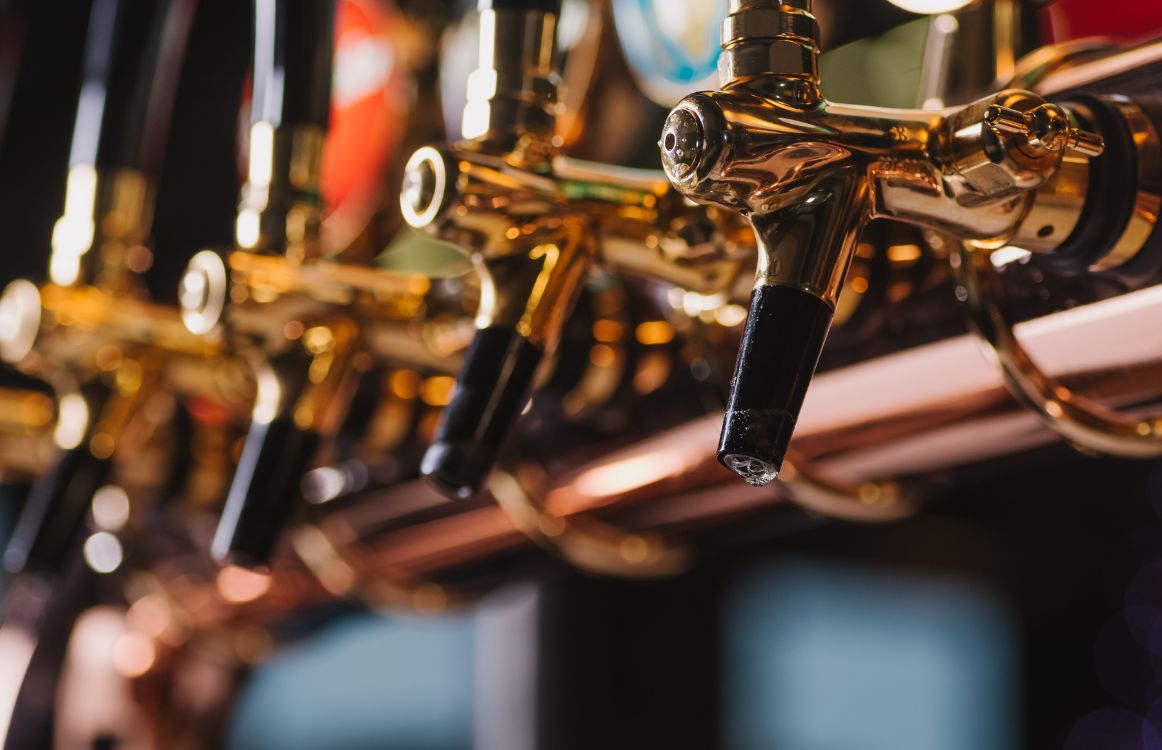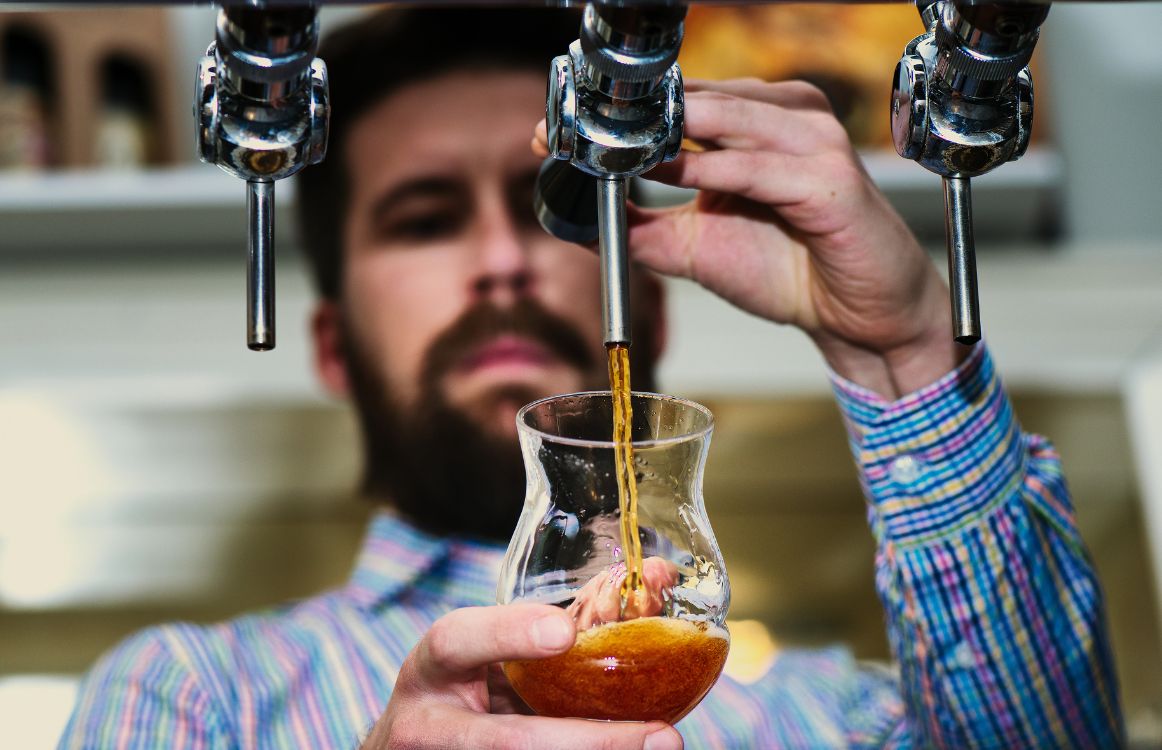Bacteria in Beer Tap Lines
It is a painful and guilt-ridden situation to find out you may have bacteria in beer tap lines in your brewery. You worry that you didn’t cover all your bases, that you did something wrong, or that you’ll lose a batch of beer. Losing beer can mean hundreds if not thousands of dollars. Yes, it can be scary. But it is also quite common. It happens to the best of us, and all we can do is educate ourselves and get back on track.
To that end, let’s look at the details around bacterial contamination in your beer lines.

Bacteria in Beer Tap Lines
Bacteria is everywhere. It is even smaller than yeast and much more prevalent, which is why we are surrounded by bacteria at virtually every turn. We have hundreds of colonies of bacteria on and in our bodies alone, and most bacteria are harmless to humans. In fact, we need good bacteria in our bodies to counteract any bad bacteria that may enter. One of the great things about beer, in fact, is that it does deliver some degree of probiotics to our gut and help us keep a happy, thriving colony there to keep us healthy.
What Is It?
However, we want to be able to control bacteria when it comes to any food or beverage production. While bacteria that invades food may make humans sick, we do not usually have to worry about bacterial contamination making our loyal fans sick. Thanks to the alcohol and the hops in the beer, 99.9% of bacteria will be killed off anyway. The problem is bacteria in beer can do more harm to beer than to humans.
The most common bacteria to infect beer lines are Pediococcus and Lactobacillus. We have also seen acetic acid bacteria, Obesumbacterium, Pectinatus, and Zymomus species.
Furthermore, mold and mildew can collect in lines, turning them brown or black and sometimes encouraging growth of bacteria.
And while even a strong buildup is unlikely to do real harm, it can certainly cause diarrhea and have your beer drinkers running for the toilet.
More likely, you will end up with unwanted beer off-flavors like buttered popcorn, vinegar, baby vomit, and sour milk, none of which go well with beer.
How Does It Get There?
Bacteria can invade beer tap lines in a variety of ways. It can build up in the lines if they are not cleaned regularly enough. A crack or hole in the lines can expose the tubing to oxygen, which will oxidize the residual ingredients, causing them to mold or mildew faster than normal and to encourage bacteria growth. Even scrapes in lines that don’t actually create punctures can be small places for bacteria to attract and collect, making it difficult to clean out with common methods.
Bottom line: it happens, and it is not your fault if you don’t catch it every time. It is, however, your responsibility to do your due diligence and follow preventative measures.
How to Prevent It
To prevent bacteria from contaminating your beer tap lines:
Check them to be sure they are not cracked, punctured, or scraped
Regularly checking your lines will go a long way toward preventing bacteria from getting into your brew. As soon as you see signs of use or wear and tear, replace the lines and perform a thorough cleaning of all of your equipment, focusing particularly on attachment equipment, to be sure you catch any stray bacteria that made its way into those cracks and then into the equipment.

Clean regularly
Beer tap lines should be cleaned at least once every two weeks with an alkaline detergent cleaner. This will help remove proteins and films that tend to collect quickly. Be sure to circulate the detergent through your lines for a minimum of 15 minutes at a high speed above 2 gallons per minute.
Implement CIP protocols
If you haven’t already, implement clean in place protocols so you have all the proper chemicals and cleaners on hand to clean your equipment between batches. When you have this schedule already in place, you can easily clean your beer tap lines at the same time, making it a routine you will not forget or waver from.
Test your brew regularly
It is also a good idea to have a sample of your brew sent off to a lab to measure bacterial levels every so often, just to see what is happening with the chemical compounds of your beer. The more you get to read lab charts on your brew and compare those to how it tastes, the more intuitive your palate will become in terms of tasting slightly off-flavors.
How to Treat It
If you do find bacteria, mold, mildew, or yeast built up in your beer tap lines, you will have to immediately throw out those lines and clean all of your equipment. Again, even if you just made a batch of beer, it does not necessarily mean the batch is bad. It is worth sending off to the lab to see what your bacterial levels look like, if they are harmful, and do a smell and taste test to see if the brew is drinkable.
In the end, you may have caught the infection in time and saved yourself beer and money.
But if you do have to ditch a whole batch, be okay with simply chalking it up to a lesson learned and consider yourself a master brewer now that you have experienced what most of the rest of us in brewing have dealt with at least once.
Cheers!
Are you still pitching fresh yeast every time? By reusing your yeast, you can save up to hundreds of thousands of dollars per year on just yeast alone!
Join the hundreds of brewers from all around the world using the Smartest Automated Yeast Cell Counter! Request a Free Demo Account today and experience firsthand how Oculyze can take your brewery to the next level!
Sources:
- https://www.brewersassociation.org/association-news/importance-draught-beer-line-cleaning/
- https://www.tcsco2.com/b/dirty-keg-lines–importance-of-cleaning-beer-lines
Stay on top on important fermentation insights – subscribe to our monthly newsletter and receive a hand-picked selection of our most relevant articles straight to your inbox.
Never miss a beat and get real time updates with a new article each workday by subscribing our social media channels.
Instagram | Facebook | Twitter | YouTube


